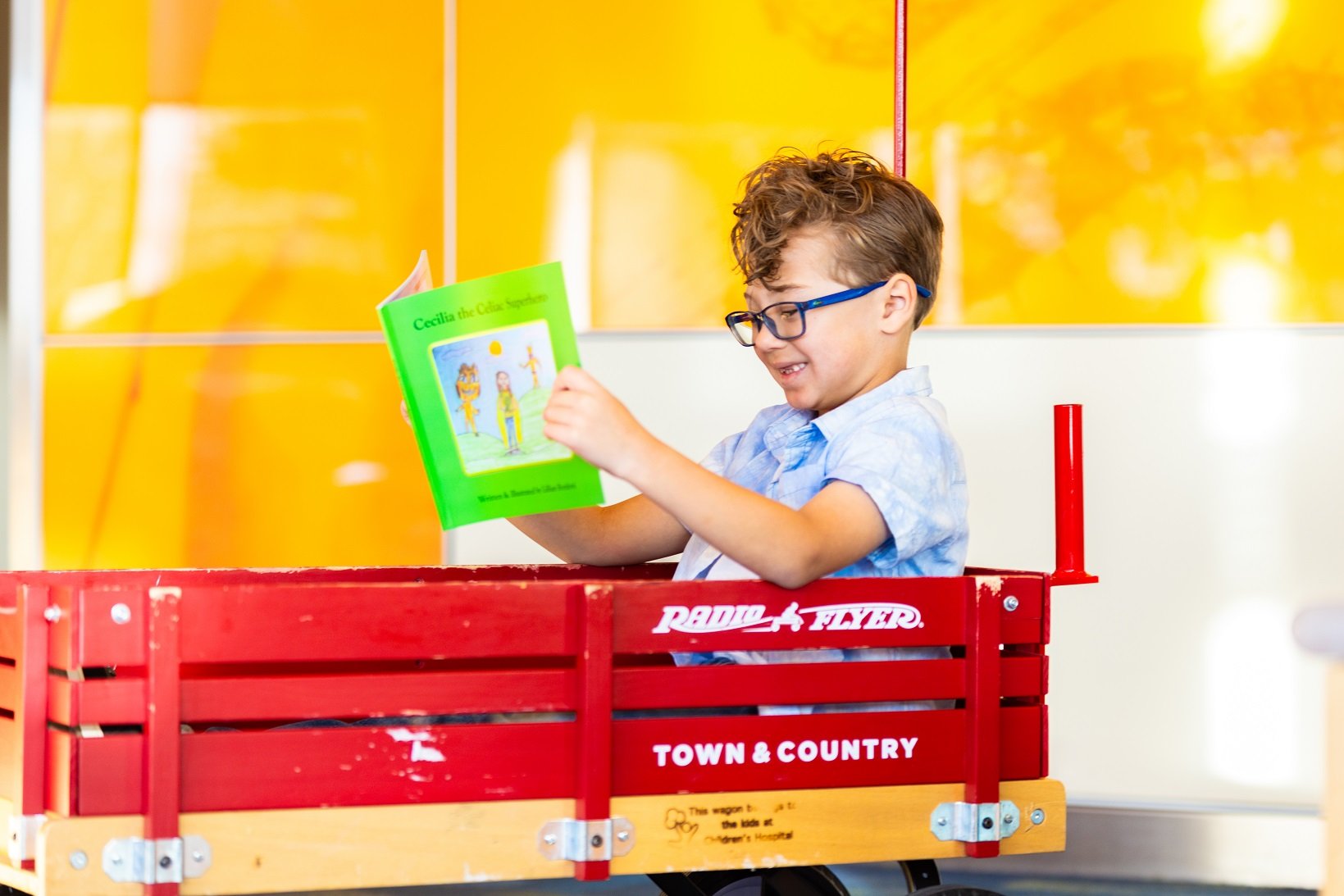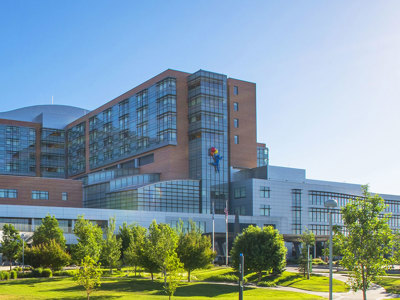- Doctors & Departments
-
Conditions & Advice
- Overview
- Conditions and Symptoms
- Symptom Checker
- Parent Resources
- The Connection Journey
- Calm A Crying Baby
- Sports Articles
- Dosage Tables
- Baby Guide
-
Your Visit
- Overview
- Prepare for Your Visit
- Your Overnight Stay
- Send a Cheer Card
- Family and Patient Resources
- Patient Cost Estimate
- Insurance and Financial Resources
- Online Bill Pay
- Medical Records
- Policies and Procedures
- We Ask Because We Care
Click to find the locations nearest youFind locations by region
See all locations -
Community
- Overview
- Addressing the Youth Mental Health Crisis
- Calendar of Events
- Child Health Advocacy
- Community Health
- Community Partners
- Corporate Relations
- Global Health
- Patient Advocacy
- Patient Stories
- Pediatric Affiliations
- Support Children’s Colorado
- Specialty Outreach Clinics
Your Support Matters
Upcoming Events
Colorado Hospitals Substance Exposed Newborn Quality Improvement Collaborative CHoSEN Conference (Hybrid)
Monday, April 29, 2024The CHoSEN Collaborative is an effort to increase consistency in...
-
Research & Innovation
- Overview
- Pediatric Clinical Trials
- Q: Pediatric Health Advances
- Discoveries and Milestones
- Training and Internships
- Academic Affiliation
- Investigator Resources
- Funding Opportunities
- Center For Innovation
- Support Our Research
- Research Areas

It starts with a Q:
For the latest cutting-edge research, innovative collaborations and remarkable discoveries in child health, read stories from across all our areas of study in Q: Advances and Answers in Pediatric Health.


Everything you Need to Know About Pediatric Eye Care

Parenting resources are full of information on wellness visits, milestones and parenting advice, but when it comes to eye care, many parents and caregivers find themselves in the dark. When do vision checks start? How can caregivers help protect children’s eyes from accidents? When should kids start visiting an eye doctor?
“Parents in general are very concerned about their kids’ eyes and vision, and it is something that they're thinking about because vision is such an important sense for us,” says Children’s Hospital Colorado pediatric ophthalmologist Becca Edwards, MD. “But if parents don't wear glasses themselves or don't have a family history of eye problems, they often aren't familiar. And so, I think there is a lot of confusion out there.”
Dr. Edwards says that your child’s primary care doctor is a wonderful resource for making sure their eyes are developing as expected and to help watch for key signs that there may be an issue. Additionally, there are several things parents and caregivers can do to help kids avoid eye-damaging accidents.
Pediatric vision screening
From the early days of life through adolescence, families can rely on primary care physicians and schools for routine eye checks. Dr. Edwards says there’s no need to visit a pediatric ophthalmologist unless a particular concern or need arises.
Newborn vision screening
A child’s journey with eye care starts right after they’re born. In the newborn nursery at the hospital, doctors do an initial eye screening and determine whether an additional evaluation from a pediatric ophthalmologist is necessary. This includes a red reflex test, which helps screen for problems in the cornea, lens and back of the eye. Babies with an abnormal red reflex test will be referred to pediatric ophthalmology for a more in-depth exam.
Pediatric ophthalmologists will also screen babies who might be at a high risk for conditions such as retinopathy of prematurity, which occurs in babies who are born early, and retinoblastoma, glaucoma and cataracts, which can cause vision loss at a young age.
Vision tests for kids
From ages 1 through 4, every kid will get a vision screening at their annual well-child visit. Family physicians use a few different tests to make sure kids’ vision and eyes are developing and working as expected. Doctors are looking for masses in the back of the eye, eye misalignment, uneven eye prescriptions, and can use the red light reflex test to check for these issues.
Additionally, they’ll likely use one or more other tests, such as photo screening and autorefraction screening, which use automated devices that are more sensitive and can more easily detect problems.
“That’s why we have all these screenings in place from a very young age. Kids aren't going to complain that their vision is blurry. They just ignore an eye if it's blurry or if it's misaligned,” Dr. Edwards says. “It's really important for us as a medical community to check the eyes frequently as kids grow and develop so that we don't miss something.”
As kids get old enough to begin attending school, they can start using eye charts to test vision. This is also often the point at which kids can start giving their own input on their vision and eyes, as they are more able to communicate their experiences. Screenings happen at both their annual well-child visit and at school. Each state is different, but in Colorado, school screenings take place in kindergarten and first, second, third, fifth, seventh and ninth grades.
When to see a pediatric ophthalmologist
Children don’t need to see an eye-specific doctor unless these screenings catch a problem or show that they may need corrective glasses or contact lenses, says Dr. Edwards. Kids with developmental delays, or those who are nonverbal may also have more regular visits with an ophthalmologist to add an extra level of screening.
“They don't necessarily ever need to go to a regular eye doctor visit if they're healthy, they have good vision, they don't have any family history of any eye conditions, they don't take any medications that might impact the eyes — those kinds of things,” she adds. “As they get older, if they are not able to read the eye chart and need glasses, then they'll get referred to us. But not every child needs to have a dedicated eye exam with an eye doctor as long as their vision screens are normal.”
However, when kids do end up with a referral to see an ophthalmologist, Dr. Edwards recommends seeking one that is dedicated to pediatric ophthalmology. Care for children and adults can differ greatly, especially eye care.
“Pediatric specialists for eye care are more familiar with some of the different exam techniques that we need to do for these different developmental ages. For example, we have different ways of getting a vision assessment in somebody who's nonverbal that a regular adult optometrist or ophthalmologist might not do on a regular basis,” she says. Additionally, kid-focused experts are more familiar performing retinoscopy, an exam technique used to determine glasses prescriptions in babies and young children, and are experts in common pediatric conditions like strabismus, or eye misalignment.
A caregiver’s role in eye care
Regular screenings are a great way to identify common eye and vision concerns, but sometimes the best tool for catching potential issues or protecting kids’ eyes from accidents is a parent or caregiver.
Eye intuition and things to watch for
“Usually, parents have a pretty good gut sense of, ‘My baby doesn't seem to react to my face the way my other kids did,’ or, ‘My baby doesn't notice things at the playground the way other babies notice,’” Dr. Edwards says. “I really do think that parents have a good sense of when something is different about a child’s eyes.”
She recommends keeping an eye on a few things, including:
- Whether kids over 6 months old can hold their eyes straight
- If a child tends to hold things very close to their face
- If a child is hitting important visual milestones
- Whether kids respond to a visual stimuli as they get older
- If a child is able to track and follow interesting objects with their eyes
If a parent or caregiver notices any of these issues, Dr. Edwards says they should consider raising the issue with their child’s pediatrician to get a referral to an ophthalmologist.
How electronics affect vision
One of the most common areas of interest in eyes and vision is around screen use. Dr. Edwards says that while we don’t have any evidence that screens damage eyes or impact vision, we do know that they can cause dry eye and irritation. This is particularly true in Colorado, where high altitude and dry conditions put kids at a greater risk for these issues.
Some caregivers are tempted to turn to blue-light glasses or blue-light blockers as a solution, but according to Dr. Edwards, these blockers don’t have any proven impact on eye health. They can improve sleep, as blue light can affect circadian rhythms.
Instead, she recommends limiting screen time for kids under two as much as possible. Once kids are a little older, between 2 and 5 years of age, Dr. Edwards says to follow the American Association for Pediatric Ophthalmology’s screen-time guidelines by limiting screen time to just one hour a day.
Once kids reach school age, limiting screen time gets harder, especially as so much learning happens on laptops and tablets. She says that the best way to help kids avoid dry eye and eye strain is to teach them the 20-20-20 rule: Every 20 minutes, look at something 20 feet away for 20 seconds. Artificial tears can also be helpful to keep on hand, however if dry eye becomes a significant bother, it may be time to schedule an appointment with an ophthalmologist.
Pediatric eye protection
According to Dr. Edwards, some of the most common reasons kids visit the ophthalmologist are eye injuries. These are particularly common with active kids, who might get hit with an elbow during basketball, take a spill off their bike or get hit with a Nerf dart.
“Whenever possible, we recommend that kids wear a face shield for activities with very high-velocity objects, so sports like hockey, baseball, motorcycle riding,” she says. “And then they should wear sport protective glasses otherwise. We recommend those for basically any sport activity.”
At the same time, Dr. Edwards understands that not all kids will be excited to wear such forms of protection. In those cases, she recommends that parents and caregivers weigh the options carefully.
“For the activities that are really high risk, put your foot down about having good protection. For activities that are maybe less risky, if they're not willing to do it, it’s about choosing your battles,” she says. “Some protection is better than nothing, and eye injuries can happen anytime. You're not going to walk around with a full face shield on your whole life, but for activities where there's really high speed, small projectiles, I definitely would recommend wearing more protection.”
The sun is another potential harm that parents and caregivers should consider. Sunglasses are great, but not all kids are willing and able to wear sunglasses, especially when they are younger. In those cases, Dr. Edwards suggests alternatives, such as wearing hats, avoiding too much direct sunlight (while balancing time to enjoy the beautiful Colorado sun) and using shade as a tool against the sun. In Colorado, these measures are especially important.
“We are at higher altitude here, so parents should be mindful when hiking in the snow or in the sun. It can feel cool outside, but there's very high UV exposure. This can cause photokeratitis, which is basically a sunburn of your eyeballs. It is very uncomfortable,” she explains.
How to safely observe a solar eclipse
In recent years, kids have had the rare opportunity to experience various types of solar eclipses. In April 2024, much of the U.S. will be able to see a full solar eclipse. While this is an exciting experience, proper eye protection is important for avoiding photokeratitis solar retinopathy, which can cause permanent vision loss.
Dr. Edwards says eclipses can be dangerous because the normal brightness of the sun is irritating enough to make us look away before much damage occurs. But during an eclipse, that brightness is muted enough that we can stare for longer than is safe.
That’s why safe eclipse viewing requires special glasses. These glasses are usually affordable and widely available, but there are scams on the market. To ensure your glasses are safe, look for ISO-certified glasses and make sure you buy them from a trusted vendor.
Follow these additional tips, as well:
- Regular sunglasses are not a replacement for eclipse glasses.
- Looking through a camera or binoculars is not safe.
- Eclipse glasses are meant to fit over a pair of regular glasses.
- Binoculars, telescopes and cameras are unsafe to use, unless they have special lens.



 720-777-0123
720-777-0123






